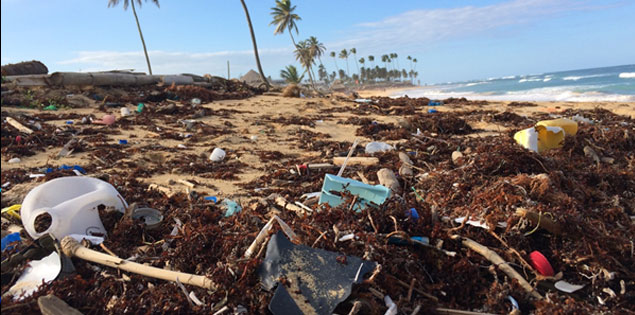According to a Central Pollution Control Board report, in the year 2020, India has generated over 1 million tonnes of e-waste, although other sources claim this number to be much higher. This value is increasing with a growth rate of over 30% every year. With this, India stands to be one of the top 10 countries producing the most e-waste along with U.S and China. Constantly evolving technology and a highly competitive market for electronic products are compelling the production of new models almost every year, leading to a faster rate to obsoletion of supporting software and hardware. This has significantly decreased the span of use of an electronic device, resulting in a profound increase in the rate in e-waste production over the last few years.
The Government of India has set up policies and regulations for e-waste management. Most of these policies are based on Extended Producer Responsibility (EPR) authorization. This is provided by the Central Pollution Control Board (CPCB) under Ministry of Environment, Forest and Climate Change, (MoEFCC), which mandates the Indian electronic products manufacturing outlets to get certified and take responsibility of managing electronic products after the end-of life, in order to operate/set outlets in India.
The issue is that there is a limited understanding as to how to implement the policy which is often only viewed as a compliance exercise. A recent inspection of 83 EPR-authorized outlets by the Delhi Pollution Control Committee (DDPC) revealed a poor state of compliance in the city, which may also be reflective of the policy status of the country overall. In 2016, the rules of EPR were broadened to introduce a ‘Producer Responsibility Organisation’ (PRO). A PRO is a professional organization that helps and guides electronic owners/producers to meet their EPR targets through various processing technologies, help collect and recycle e-waste, and explain various end of life management strategies. Although it is a great solution to address the inertia of EPR policy, it lags behind as it only functions through the services of the authorized recyclers (that constitute less than 10%). Considering this, it is evident that there is a gap in regulation and implementation of policies which necessitates better and sustainable strategies.
To combat this, sustainable finance instruments can provide defined pathways to place the regulations to the front seat and address it practically for a better e-waste management system in India. The following mechanisms can be deployed:
- Fintech and Blockchain – The growth of blockchain technology for traceability and data security makes it a compelling tool to incorporate e-waste management. An EPR authorized outlet, can install e-waste disposals that credit blockchain-secured points or tokens, which can be exchanged for products, food or services. This practice has been successfully implemented in Canada by a company called Plastic Bank. This company developed a blockchain platform, for an end-to-end supply chain traceability from the initial collection of plastic waste, to the products manufactured from it as end product in the market. For e-waste, this strategy would encourage manufacturers to invest in sustainable product designs to track effectively.
Blended Finance – Over 90% of the e-waste in India is handled by unorganized recyclers and only under 10% is processed and handled by the organized units (e.g., PROs). Blended finance platforms (for e.g., SDG Fund) can encourage the financial institutes, and other investors such as UNDP (United Nations Development programme) to invest in high-risk sectors (here the unorganized recycling sector) as it would share the risks associated with investing among multiple parties. It would provide them an opportunity for unorganized sector to integrate with the organized sector as a single-value chain and over a course of time, help them transition into more organized units.- Sustainability-linked Loans –These loans can help provide funding for specific strategies to incorporate sustainability to business practices. For example, Deposit Refund System (DRS), which is defined as a part of the EPR policy provides an incentive for the customers to dispose the product responsibly after end-of life to the same outlet. This system requires an initial investment by the outlets to establish which can be fulfilled by considering sustainability-linked loans.
These strategies can help improve addressing ineffective implementation of e-waste management in India. Other factors that can help improve the conditions are, better accessibility of the e-waste management units (PROs) to the outlets, penalty for non-compliance of policies and general awareness of the product life cycle, use and disposal by the consumers. Ever increasing dependency of technology and digitization has made it important to prioritize establishing an effective e-waste management in the country across all sectors.
Bibliography:
- https://cpcb.nic.in/list-of-registered-pro/
- http://www.indiaenvironmentportal.org.in/files/file/e-waste-management-NGT-CPCB-report.pdf
- https://www.deccanherald.com/national/generation-of-e-waste-in-india-sees-31-annual-growth-1081505.html
- https://www.statista.com/statistics/499952/ewaste-generation-worldwide-by-major-country/
- https://cpcb.nic.in/epr-authorization/
- https://cpcb.nic.in/uploads/Projects/E-Waste/EPR_tech.pdf
- https://economictimes.indiatimes.com/industry/renewables/very-high-non-compliance-of-e-waste-rules-at-72-collection-centres-in-delhi-dpcc/articleshow/84113260.cms?from=mdr
- https://cpcb.nic.in/uploads/Projects/E-Waste/Guidelines_for_PRO_23.05.2018.pdf
- https://www.meity.gov.in/writereaddata/files/EWaste_Sep11_892011.pdf
- authorized recyclers

